
Water2Drink Blog
Announcing: The Multipure Aqualuxe!Friday, October 24, 2014, in Water News, Products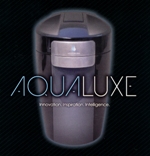
Last week, we talked about how to protect yourself from
waterborne microbial cysts. This week, the world of water filtration has a new Multipure
product to address current concerns about transmittable disease by #bacteria and viruses as well. At the Multipure 2014 PURE Annual Convention in Las Vegas,
NV, Multipure International introduced the Aqualuxe,
a bold, innovative departure from their other product families.
What makes this product exceptional? Here is what we believe
are the #Aqualuxe’s standout features:
We have not seen another product quite like this currently
on the market. The expected retail price is $1,080, and the replacement filter
cartridge is $150.
This is a remarkable departure from past products for
Multipure. They introduced this product concept several years ago to their
distributors, and #Multipure has been working hard to bring it to market ever
since. It’s exactly what is needed for communities that constantly receive
“boil water” alerts, which is happening with increasing frequency, or for
anyone who is concerned about the growing #contamination problem in our nation’s
water supply.
Multipure has the product on display at their company
headquarters, and a select few test marketers have an “ACE” beta version to
provide valuable feedback to Multipure. Multipure
is still in the process of obtaining NSF certifications and refining their manufacturing
and supply processes, and they estimate that the product will be ready to ship
in early 2015. In the meantime, Water2Drink.com
will soon be updating our website with this new product information, and you will
be able to register to be notified when the Aqualuxe becomes available.
|
 0 Comments 0 CommentsTweet |
Transmittable Viruses and PathogensFriday, October 17, 2014 - Posted by Water2Drink, in Health, Water Safety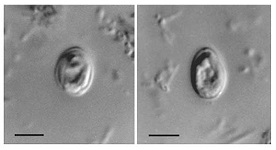
Cryptosporidium It’s impossible to ignore the news about the first-ever emergence
of the Ebola virus here in the United States.
Citizens are quite concerned with the potential to be infected with this
rare and deadly virus. While #Ebola is certainly a grave illness, at this time it is
unlikely that the majority of people in the U.S. will come into contact with
the virus. However, there are numerous
other non-viral, waterborne parasites that can infect all citizens, even within
a treated municipal water delivery system.
For example, the Cryptosporidium
pathogen can cause the diarrheal illness cryptosporidiosis. Cryptosporidium is not passed along by
insects, but is transmitted by hardy cysts that can be ingested and that result
in gastrointestinal infection and illness.
Cryptosporidium can survive
for long periods outside a host, and is resistant to common disinfectants
including chlorine-based disinfectants.
High concentrations of chlorine disinfection is required to inactivate #Cryptosporidium. Generally, the required levels of chlorine
preclude the use of this #disinfection method as a reliable method to control it
in drinking water.
Other microbial pathogens (microorganisms capable of causing
disease) such as Giardia, Entamoeba, and Toxoplasma can be transmitted by fecal
contamination of surface waters used as drinking water sources, or by other
exposures such as touching contaminated soil or eating unwashed fruits and
vegetables.
The good news is you can easily protect yourself. All #Multipure Water Filtration Systems have
been NSF tested and certified for 99.95 and over reduction percentage levels of
these waterborne microbial cysts. In
addition, a Multipure system will also reduce the chlorine-based disinfectants
that are used by municipal water treatment plants. You can check the reduction
levels of all contaminants on our Water2Drink website.
The Product Page for each water filtration system contains a link to the Performance Data Sheet which
contains that information. Use your
Multipure filtered water for drinking, washing foods, ice cubes, boiling
foods, or for any ingestible use. |
 0 Comments 0 CommentsTweet |
Are You Exposed to PCE?Friday, October 10, 2014 - Posted by Water2Drink, in Health, Water News, Water Safety
A recent article in The
Washington Post brings to light a new example of neurotoxin exposure in the
environment. Tetrachloroethylene, or PCE, was used by New England’s water
utilities to line the insides of water pipes in the late 1960’s. PCE has been linked to increased risk for
stillbirths and other pregnancy complications. PCE is widely used in the
dry cleaning industry also, so it may be of concern for many other citizens as
well. The toxin has been linked to
mental illness, breast cancer risks, and some birth defects.
Unfortunately, PCE was not only found in the New England
area. Contamination has been found on military
bases across the country as well, along with water systems in Pennsylvania and
California.
There is a simple solution to address this problem: use a Multipure Drinking Water System at your
sink or point-of-use water supply to filter your drinking water. Multipure filters are NSF tested and
certified under NSF/ANSI Standard 53 Health Effects to reduce the widest array
of water contaminants of health concern of any filter on the market, including
PCE. You can find a confirming Performance Data Sheet on our Water2Drink website that will
give you the list of all contaminants that are addressed by using a Multipure
water filter.
If you would like to learn more about PCE, the Environmental
Protection Agency has information on their website as well. Click here for more information about health
effects and the EPA’s drinking water regulations.
|
 1 Comments 1 CommentsTweet |
The (Water) Fountain of YouthFriday, October 3, 2014 - Posted by Water2Drink, in Health, Water News
Your search for the elusive Fountain of Youth could be as
close as your kitchen sink. Water is a critical life element for our body. Our organs cannot function properly when the
body is not adequately hydrated, because water is taken from other places
within the body to combat dehydration. This can lead to sunken skin, increased
acne, and weakened muscles and joints.
A recent article on modernsalon.com includes a case study in
which the Daily Mail U.K. writer Sarah Smith asks, “What would happen if I
drank the recommended amount every day for a month?” The article includes a before and after
picture of Ms. Smith, who concluded she looked 10 years older in her before
picture. Dark under-eye shadows, blotches, and lackluster skin all disappeared
in just 30 days.
Are you looking for a healthy, easy way to look younger? What
would you be willing to do to take 10 years off your face? How about nourishing
your body with fresh, clean drinking water? We can help to provide the water if
you are willing to take the challenge. A Multipure water filtration system will
give you the healthy water you need for your challenge. The rest is up to you! Just drink the recommended 8 to 10 glasses of
water each day and see what happens. |
 0 Comments 0 CommentsTweet |
Continuing Education About Water QualityFriday, September 26, 2014 - Posted by Water2Drink, in Water News
If you are educating yourself about your water supply, and
want to know how the government is helping to protect you, we have new
information on our website that may assist you in your research. The Environmental Protection Agency (EPA) sets limits on the
levels of certain contaminants in drinking water. In addition to the limits, the EPA sets
testing schedules and methods of testing that water systems must follow. These are implemented by most states and
territories that oversee the water systems in their locations.
Water2Drink has added a link to the EPA document, "National
Primary Drinking Water Regulations," which serves as a useful summary of primary
and secondary drinking water regulations. This list also includes a description
of how each contaminant can negatively affect health and where the contaminant
comes from.
If you would like more information about the EPA’s current
drinking water regulations and what the regulations address, you can visit the “Current
Drinking Water Regulations” page on the EPA website for more information and
links.
|
 0 Comments 0 CommentsTweet |
Counting Your GallonsSunday, September 21, 2014 - Posted by Water2Drink, in Products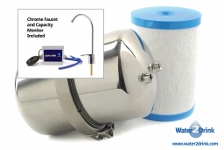
If you are looking for an appropriate Multipure Drinking
Water System for your home, you probably have looked at the Aquaversa family of
products. In researching the entire
Multipure product line, you may have noticed that the Aquaversa MP750 model and
the MP1200EL model appear to be identical, with only the addition of a Capacity
Monitor on the MP1200EL. What is the
difference between these two filter models?
This is a common question that we hear many times from our customers,
and here is an explanation of the key difference. As you may know, all Multipure Drinking Water Systems
have been tested and certified under NSF drinking water filter certification
rules. Under these rules, the
manufacturer is permitted to claim only 50% of the "test capacity" of
the filter. The test capacity of the Aquaversa MP750 is 1,500 gallons, so NSF’s
"rated capacity" for that model is 50% of those gallons, or 750
gallons. The logic behind this is, since customers are not measuring actual
water usage, NSF wants to establish a wide margin of error for when the filter
cartridges are replaced. If, however, the manufacturer includes a
"performance indication device," such as the Capacity Monitor
included with the Aquaversa MP1200EL, and the customer can measure the actual
water usage to more accurately time filter cartridge replacement, the
manufacturer can claim 80% of the test capacity. For the Aquaversa MP1200EL,
that's a rated capacity of 1,200 gallons. Generally speaking, Water2Drink.com recommends the
MP1200EL model for families of four or more, and for office or higher volume environments.
Otherwise, consumers should plan to replace the filter cartridge annually,
which also will serve to maintain the manufacturer’s lifetime housing warranty. Please contact us if you have any other
questions regarding how to choose the best Multipure product for your home! |
 0 Comments 0 CommentsTweet |
How to Read Your Water ReportFriday, September 5, 2014 - Posted by Water2Drink, in Water News
Have you ever received a Consumer Confidence Report (CCR) from
your water utility? A CCR is a federally mandated annual report that every
water utility is required to publish.
Some utilities may not mail it to every household, but you have the right
to access the information as a consumer.
If you are not sure how to read your report, NSF (the public
safety and health organization) has an article that may help. The “What’s In Your Drinking Water” article
talks about what information is included in a CCR, and how to use the
information. Generally, the CCR contains
an overview, an explanation of abbreviations, and contaminant tables that list
which contaminants have been detected in the community water supply.
The NSF encourages people to use a home water treatment
device to address possible contaminants in your water supply. A variety of
products exist to treat drinking water, so you will want to do some research to
ensure you get a filtration system that meets your specific needs. “Because residential water treatment products
are not federally regulated, it’s important to verify that the system is tested and certified to
meet your specific contaminant reduction needs before purchasing,” says the NSF
article. #watercontamination #NSF #consumerconfidence #waterfilter
#Multipure #Water2Drink
|
 0 Comments 0 CommentsTweet |
What Are You Made Of?Friday, August 29, 2014 - Posted by Water2Drink, in Health
We hear all the time about how much water a person should
drink. But have you ever wondered what
would happen if you stopped drinking water?
The creators of AsapScience, Mitchell Moffit and Gregory
Brown, have weekly videos that help to understand the science of your own
life. Their “Weekly Dose of Science”
video called "What If You Stopped Drinking Water" explains how we would begin
to feel as the effects of dehydration take over our bodies. “Much like the desire to breath oxygen, thirst is a survival
instinct,” according to the AsapScience video.
With H2O being the most abundant molecule in our bodies, it performs important
functions such as carrying nutrients and hormones, regulating body temperature,
cushioning our joints and providing lubrication. These functions produce about 1.5 liters of
urine a day, which is essential for the body to replace before it begins
shutting down.
While the body can exist many days without food, within one
to two days of no fluids the effects of dehydration can seriously impact the
body. Within three to five days, our
organs and brain shut down.
The body needs water.
It is possible to replace fluids with any substance containing water,
such as soda, tea, or even some foods; however, clean water is the essential
element that the body can best assimilate, as our bodies are made up of about
65 percent water.
While NASA is figuring out how to turn urine into clean
drinking water, you may want to just filter your home tap water. Multipure makes a water filter for almost
every environment, and we here at Water2Drink.com are able to help you determine
which one is right for you. |
 0 Comments 0 CommentsTweet |
Small Community, Big ProblemSaturday, August 23, 2014 - Posted by Water2Drink, in Water News, Water Safety
Recently, an article came across our desk about the water
quality in the small community of Wake Forest, NC. The 100+ homes in the neighborhood must
contend with discolored water that often contains sediment as well.
According to neighbor Wendy Callahan, “Some days we’ll get
relatively clear water, but you just don’t know until you turn on the tap.” President Tom Roberts of the water provider,
Aqua North Carolina, calls it an “aesthetic issue” that is not health-based.
"We try to treat the most sufficient way we can,"
Roberts said. "A lot of times that's by adding a sequestrant, which is an
additive that keeps it in suspension so it's invisible to the customers."
Sequestrant? Invisible? We looked up “sequestrant” and it
does not look very appetizing. Chemical #sequestrants are often used in treatment projects to remove contaminants that adversely
affect taste, odor, and color of drinking water. They do not remove, reduce, or solve the problem;
sequestrants appear to just mask the underlying contamination.
Obviously, this is a small water treatment facility serving
just over 100 homes, much like many smaller communities and towns across the
nation. Typically, small community water
utilities are inspected at some regular interval, but they simply do not have
funding to provide the optimal water filtration solution for you, their
customer. Adding a Multipure Drinking Water Filtration System would provide a
buffer to help protect consumers from ingesting many of the “irregularities”
that occur between inspections and maintenance cycles.
|
 0 Comments 0 CommentsTweet |
The 411 on NSF 401Thursday, August 14, 2014 - Posted by Water2Drink, in Water News, Water Safety
If you have done any research on water filtration systems,
you most likely know that the highest quality systems not only rely on
Environmental Protection Agency (EPA) standards, but also are tested to, and
certified against, NSF International standards. While there are myriad
contaminants that are reduced or eliminated by a certified filter, you may not
know that currently there is no EPA standard for emerging contaminants in
drinking water.
What are emerging contaminants? They are chemicals being discovered that
previously have not been detected, or are being detected at significantly
different levels than previously acceptable.
These include #pharmaceuticals, personal care products, pathogens, #hormones, #antimicrobials, veterinary drugs and feed additives. These chemicals can accumulate in human
tissue or blood, and are associated with health effects such as endocrine
disruption. The EPA has not been able to
create drinking water standards for these emerging compounds, as only recently chemists
have been able to measure trace amounts of the #contaminants present in public
water supplies.
But now the issue has been identified and #NSF is working to
develop a testing standard for emerging contaminants. A recent issue of Scientific American describes the issue in depth.
The new testing standard is identified as NSF Standard 401: Drinking Water
Treatment Units – Emerging Compounds/Incidental Contaminants. Since
this is a new unpublished standard and testing protocols have not been
finalized, no drinking water filter system can honestly promote that they are
in compliance with the new standard, including Multipure’s. However, Dr. Andrew
Fenwick, PhD, of Multipure International is actively working on NSF standards
committees to help finalize testing protocols. #Multipure will continue to be
on the forefront of product testing and standards compliance certification when
the new NSF Standard 401 is published. |
 0 Comments 0 CommentsTweet |
Water, Water, Everywhere!Friday, August 1, 2014 - Posted by Water2Drink, in Water News, Water Safety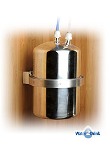
By now you have probably seen the news reports about the water
main break in Los Angeles, CA, on Wednesday, July 30th. TWENTY MILLION GALLONS were released into the
streets of the #UCLA campus. Sadly, those
20 million gallons of water were lost during the midst of California’s worst #drought in decades. What the headlines
didn’t shout was that the aging #watermain that burst was 93 years old. Warren G. Harding was inaugurated as the 29th
U.S. President in 1921 when that water line was laid and the U.S. formally
ended World War I in August of that same year.
That’s ancient! In fact, most of the pipes that supply drinking water across
the country were laid in during the first half of the 20th
century. For many cities, the greatest
population growth and urban expansion occurred from the late 1800’s into the
1920’s. As our water supply infrastructure
ages, ruptures like this will occur with increasing regularity. The concerning thing to note is that the
rupture occurred in the water line after the water left the treatment
facility. Why is this important to you?
Breaks like this happen all the time, anywhere between the
plant and our homes. There are 240,000
breaks a year, according to the National Association of Water Companies. These breaks can allow dirt and contaminants
into your #water supply after it has been treated but before it reaches your
home.
Fortunately, there is a solution. Citizens can protect themselves by using a
high quality “final barrier” point-of-use water filtration system like the
Multipure Aquaversa. The Aquaversa, with
its solid #carbon block filter technology, is considered to be the most
effective method in reducing a wide range of water contaminants of aesthetic
and health concern. To find out how to
protect your health and your family, contact #Water2Drink and we will help you determine
the right water filtration system for your needs. |
 0 Comments 0 CommentsTweet |
What Are You Willing to Pay to Eat?Friday, July 25, 2014 - Posted by Water2Drink, in Water News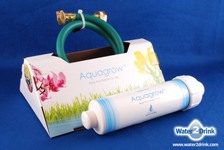
Even if you don’t live in California, you should be
concerned about California’s current drought situation. California’s $44.7 billion agriculture
industry is poised to take a big hit which will impact your food budget as you
shop for foods that are water-intensive to produce. Why does this matter to you? California is
the leading source of agriculture in the nation. The Huffington Post graphic, “Why California’s Drought Makes
Your Tomatoes So Expensive,” shows that one gallon of milk requires 880 gallons
of water to produce. A pound of
potatoes? 119 gallons of water. A loaf of bread requires 228 gallons. A pound
of beef requires a whopping 1,799 gallons of water to produce. Statistics like this are frightening. Some may decide to limit or eliminate beef
consumption. Others may explore options for fruits and vegetables closer to
home at their local farm stand instead of a grocery store. And as communities and states explore
alternatives for finding enough water for human consumption, the quality of water
sources may become questionable. Are you willing to get your hands dirty? An alternative to
buying fruits and vegetables that are grown in and shipped from drought-stricken
areas is to grow your own. And to
maintain the fertility of your garden’s ecosystem, consider adding a Multipure
Aquagrow dechlorinating filter to your garden.
The Aquagrow keeps your plants healthier by removing the chlorine that
kills beneficial microorganisms in your garden soil. |
 0 Comments 0 CommentsTweet |
Life Isn't a MovieFriday, July 18, 2014 - Posted by Water2Drink, in Water News, Products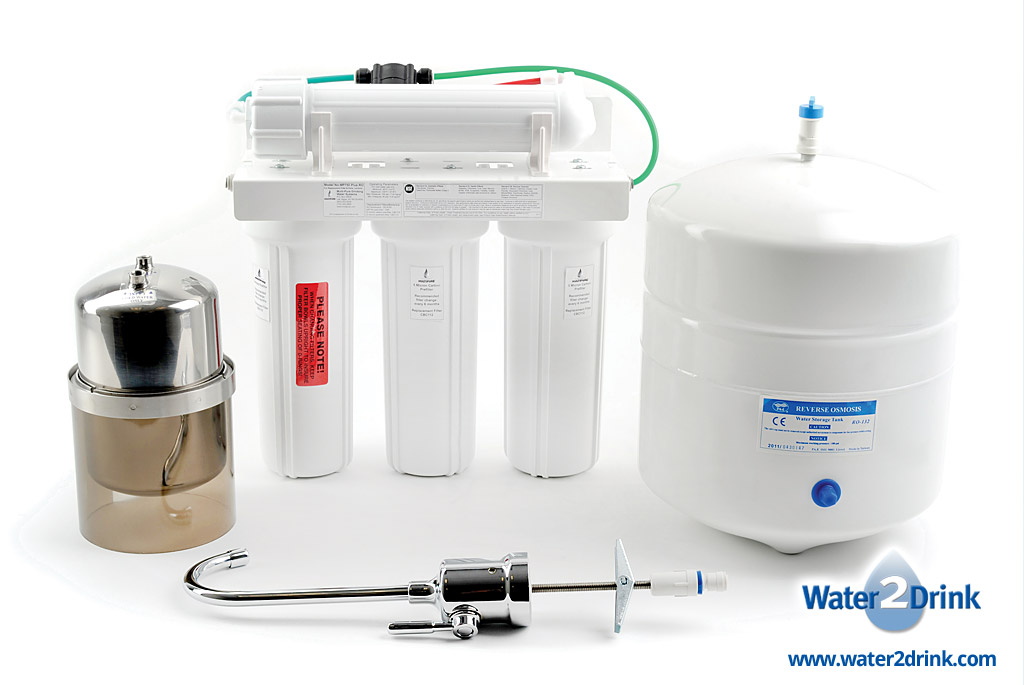
While Julia Roberts in the “Erin Brockovich” movie is able
to make sense of Chromium 6 chemical contamination in a small town’s water
source, life isn’t a movie for families who are affected by this issue. Fortunately for some, California has become
the first state to impose a limit on hexavalent chromium (also known as
Chromium 6). But what if you live with this issue (or another prevalent water
contamination source) and your state has not imposed limitations or
restrictions? The most effective drinking water filter solution for
consumers with very specific water contamination issues is the Multipure AquaRO
Reverse Osmosis System. It is an
ultrafiltration system that can remove contaminants such as barium, cadmium,
chromium (both hexavalent and trivalent), copper and dissolved solids (such as
sulphur, iron, calcium and magnesium), fluoride, nitrate and nitrite,
perchlorate, radium and selenium. But don’t just take our word for it. Multipure’s AquaRO system is performance tested
and certified by NSF International to NSF/ANSI Standards 42 (Aesthetic
Effects), 53 (Health Effects), and 58 (Reverse Osmosis). This five-stage water filtration system
produces fresh, clean drinking water for an average operating cost of just 29
cents per gallon! If you want to know
more about what components make up the Multipure AquaRO, view this video about “What’s
In the Box?” If you have a specific water contamination issue, contact
Water2Drink.com to find out how you can reduce your exposure to toxins. We can help you pinpoint the water filtration
system that will meet your needs and your budget. |
 0 Comments 0 CommentsTweet |
Three Reasons to Skip Bottled WaterFriday, July 11, 2014 - Posted by Water2Drink, in Water News, Products, Water Safety The bottled water industry has exploded over the last
decade. The effectiveness of the bottled
water marketing campaigns has led the general public to believe buying their
product is the safer, more convenient way to consume purified water. But you
can’t believe all the marketing hype. Thanks
to the Environmental Working Group (EWG), here are some reasons to skip bottled
water and find another solution. 1. 1. What’s in
the Bottle? No, not the contents, but within the plastic used to make the
bottle. The FDA has disclosed which chemicals are used to make PET plastic
(marked with a #1 code), but do you know how many chemicals may be leaching
into the water? An EWG investigation
found these plastics contain “dozens of chemical additives, manufacturing impurities
and breakdown byproducts – a total of more than 80 potential contaminants that
can leach into the water.” 2. 2. What’s in
the Water? In 2008, the EWG found 38 pollutants in 10 brands of bottled
water. The bottled water industry, unlike water utility companies, rarely
discloses the results of contamination testing on its product. Yet they claim that bottled water is as safe
as tap water. “Given the industry’s refusal to make available data to support
its claims, consumers have little reason to be confident in the purity of
bottled water,” says the EWG. 3. 3. Plastic
Pollution. As consumption continues
to rise, the U.S. Environmental Protection Agency estimates that only 29% of
plastic bottles were recycled in 2011. This leaves 71% of plastic pollution to pollute waterways,
clog landfills, and threaten marine life.
So what is the solution? Filter your tap water and use a
reusable bottle. There is a wide range
of water filtration products to fit every budget and each water concern. A Multipure solid carbon filter, tested and
certified to NSF/ANSI standards, provides consumers superior water filtration
to deliver healthier water. At Water2Drink.com, we can provide you with
affordable, effective alternatives to bottled water. Our Resource Center has product information,
performance data and warranty information to help you select the most effective
water filter to fit your needs. Call or visit us online today to explore the
hidden costs of bottled water. |
 0 Comments 0 CommentsTweet |
Making Your Drinking Water Safe in an EmergencyFriday, July 4, 2014 - Posted by Water2Drink, in Water News, Products, Water Safety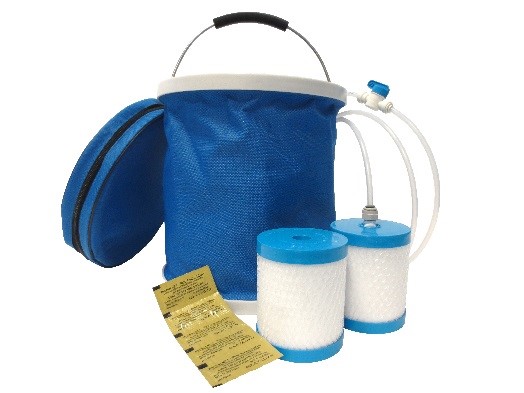
Oh, no! Your community just issued a boil water alert due to
a water main break, and the authorities don’t know how long it will last. What will
you do to protect your family?
If you own a Multipure Water Emergency Treatment (WET) System,
the answer is relatively simple: treat and filter your tap water to make it
safe to drink. The WET System comes with everything you will need to produce safe,
clean drinking water. Here’s how it works:
1. 1. Fill the collapsible bucket included in the WET
System with tap water to the designated level.
2. 2. Add the disinfection tablets that are included
in the WET system, stir until dissolved, and then let the water stand for a few
minutes.
3. 3. Screw the provided plastic fitting into one of
the two Multipure EF8 emergency carbon block filters included in the WET System.
4. 4. Attach to the fitting the plastic tubing provided
in the WET System, and make sure the shutoff valve on the plastic tubing is
closed.
5. 5. Place the bucket on a tabletop or other raised
surface and put the EF8 filter inside the bucket, letting the other end of the
plastic tubing extend well below the bucket.
6. 6. Place the open end of the plastic tubing into a
suitable container to collect filtered water.
7. 7. Let the filter soak for a few minutes and then
open the shutoff valve on the plastic tubing.
8. 8. Let gravity pressure do the rest. In very little
time, fresh clean water will begin flowing through the EF8 filter and out the plastic
tubing into the drinking water container.
9. 9. When the source water bucket is empty, refill
and repeat the process as often as needed until safe water service has been
restored.
The WET System becomes your backup drinking water source in
case of emergency. The Multipure WET System requires no electricity, hand
tools, or anything else except water. Everything you will need is included in
the kit.
How do you obtain a Multipure WET System? This product
currently is not offered for sale, however, it’s available for FREE when you
purchase a new Multipure
Drinking Water System for your home or office. Click here
for more information about this limited time offer, available from Water2Drink.com.
Prepare now, and be
ready when a water emergency strikes in your neighborhood!
|
 0 Comments 0 CommentsTweet |
The Heat Is On!Monday, June 30, 2014 - Posted by Water2Drink, in Health, Water News
Now that we
are in the heat of summer, many people think that consuming sports or energy drinks
will provide replacement electrolytes and nutrients lost through sweating or
sports activities. In fact, these drinks
are extremely high in sugar and are particularly marketed within sporting
events. For example, among sponsors of
the World Cup currently being held in #Brazil, Coca Cola is an official
corporate partner of #FIFA, and McDonald’s is an official sponsor of the #WorldCup. Marketing messaging
gives the impression that these drinks, though high in sugar, could support an
active, healthy lifestyle. As with other
health products, you should educate yourself on the content of these drinks,
and the effect sugar consumption has on the body. Some of the energy drinks contain between 60
and 70 grams of #sugar in a single bottle.
Additionally,
research shows that liquid calories are known to be less satiating than solid
calories and fill you up less. This can
set up a cycle of overindulging on sugary beverages as the body searches for
nutrients and hydration.
Unless you
are an elite athlete, the best hydrating beverage for the body is fresh,
filtered water. Replacing sugary drinks
with water reduces your sugar intake and cuts your risk of obesity, high blood
pressure and diabetes. Consider the
critical role water plays in your body, and find out here how much water your
body needs for digestion, body temperature regulation, and other important
functions. |
 0 Comments 0 CommentsTweet |
Drink Water for Life!Friday, June 20, 2014 - Posted by Water2Drink, in Health, Water News
Do
you realize just how important drinking water is to the efficient functioning
of a healthy human body? It is estimated that your body consists of 60% to 75%
water. So much of your health and how you feel is related to the quality and
quantity of water you consume. Listen to Deanna DeLong, a self-proclaimed
“water advocate,” present the “Drink Water For Life” story in a highly
informative YouTube video that outlines the virtues of drinking enough
water.
You
can view the video by clicking on this link: www.youtube.com/watch?v=833lbjUejFM
|
 1 Comments 1 CommentsTweet |
Is Chlorine Good for Your Health?Wednesday, June 18, 2014 - Posted by Water2Drink, in Health, Water Safety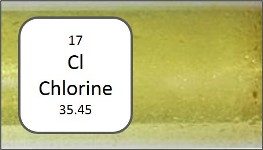
The
answer is both yes and no. There is little doubt that adding chlorine to public
drinking water supplies to serve as an affordable disinfectant has had the very
positive health effect of eliminating a host of water-borne diseases such as
cholera. Many people who have become accustomed to drinking tap water even
associate the smell of chlorine in their water with it being “safe” to drink.
The fact is that chlorine offers health benefits right up to the point where
you ingest it. But what then? The
chlorine in treated water is essentially bleach, and it’s unlikely that most
people would consider drinking bleach to be good for their health. Medical
studies have linked chlorine consumption and associated chlorine byproducts to
cancer, heart trouble, premature senility, hardening of the arteries, and a
host of other ills. And while the U.S. Environmental Protection Agency has
established “safe” levels of chlorine in drinking water supplies, most rational
people would prefer to consume none of it. So, what’s the answer?
Rather
than expect any governmental agency to intervene and change your water
treatment process in the near term, individuals can take matters into their own
hands and simply begin filtering their drinking water at the point of use.
Chlorine is fairly easy to filter out, while at the same time a variety of
other potential contaminants that may be present (e.g., cryptosporidium,
giardia, MTBE, lead, mercury, arsenic, asbestos, etc.) will be eliminated or
significantly reduced as well. The simplest and most cost-effective solution is
to filter water through a high quality compressed carbon block filter.
Would
you like to see a demonstration of how such a filter effectively strips
chlorine out of tap water?
Then
click on the link below to see a short 1-minute video on YouTube.com. Most swimming
pool owners are familiar with a chemical solution called OTO that is used to
test the concentration of chlorine in pool water – the darker the water color
after adding OTO, the more chlorine is present. The video shows a simple OTO
test of tap water and a comparison to water drawn from the same source but
pushed through a compressed carbon block drinking water filter.
|
 0 Comments 0 CommentsTweet |
Graduate to Clean WaterFriday, June 6, 2014 - Posted by Water2Drink, in Products
It’s Graduation Season!
High school. College. If you have a graduate in your life, you know
it’s an exciting time. While they may be
home for the summer, hopefully they are moving onward in the fall to bigger and
better things. To college. To a new apartment. To a new city. Give them one
last gift – the gift of great health!
As your graduate packs for their next destination, consider sending
them off with a portable Multipure Aquamini drinking water filtration system. The Aquamini is a compact, high performance
carbon filter designed to improve the quality of any municipal water source. It’s convenient and easy to use, quickly connects
to most faucets, and sets on the countertop next to the sink. The replaceable filter cartridge is rated for
250 gallons before requiring a change, which should easily serve the #graduate
for a couple of semesters.
Send your graduate out into the world with the superior drinking
water only available from a #Multipure Drinking Water System. Plentiful free,
clean water to drink every day will help your graduate stay hydrated and save
money. |
 0 Comments 0 CommentsTweet |
The Final BarrierMonday, June 2, 2014 - Posted by Water2Drink, in Water News, Water Safety
You may
believe that the water coming out of your tap is safe to drink, especially if
you live in or near a metropolitan area with water supplied by a municipal
treatment facility. But it may not be as
safe as you think. There are
numerous potential points of failure between the treatment facility and your
water glass. The Water Quality
Association has provided information on how to Protect Your Family that describes
the “Final Barrier” concept.
The best way
to control the quality of your water is by using what is known as a Final
Barrier Solution, such as a quality drinking water filtration system. Installed at the point of use (typically,
your kitchen sink), a high-performance, low maintenance water filtration system
will provide you peace of mind. This is the #finalbarrier between the municipal
delivery system and your water glass.
But not all
water filtration systems are equal. The
water quality is improved only if you can identify the contaminants that are
present in your #water, and you have the ability to certify that these
contaminants are reduced or eliminated. The simplest way to provide such verification
is if the filter has been submitted for independent performance testing and
certification, such as that provided by NSF International.
The #Multipure line of drinking water filtration systems have all been NSF tested
and certified. In this era of
transparency, Water2Drink.com provides Product Performance information so you
can understand the product design and determine which filter is right for your
home.
You can
build your Final Barrier with information, education, and a certified Multipure
Water Filtration System from Water2Drink.
Please contact us if you need assistance in determining your needs.
|
 0 Comments 0 CommentsTweet |


